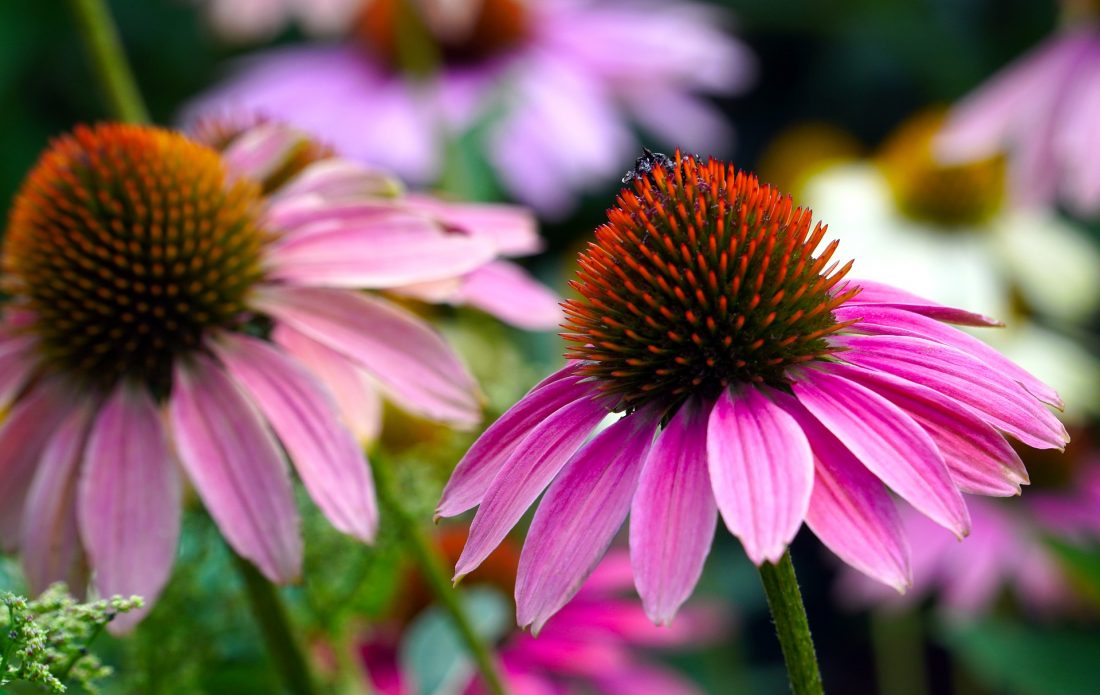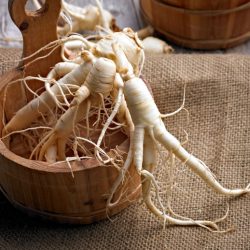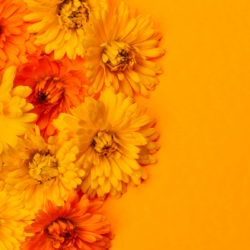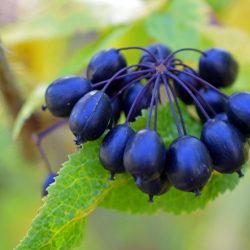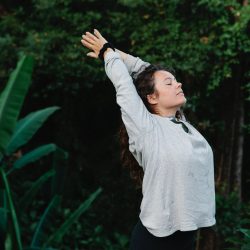Like any solar plant , echinacea offers medical matter its flower head, the culmination of this plant, but also what is diametrically opposed to it, namely, a ruffled root strain. Although arriving late in Europe (1930s), echinacea, the study of which began after World War II, particularly in Germany, have since revealed some of their secrets .
A little history
Since the end of the 19th century, echinacea harvests in nature have been established, and have multiplied to such an extent that at the beginning of the 20th century, botanists sounded the alarm . Suffice to say, that these were wild harvests not taking into account the reproductive cycles of plants, while samples were taken in protected areas hosting other coneflowers, such as Echinacea atrorubens , Echinacea simulata and Echinacea paradoxa . Other echinacea see their territories shrinking like the skin of grief, this is indeed the case with Echinacea laevigata and Echinacea tennesseensis .
The Omaha-Ponca and Lakota peoples used Echinacea angustifolia in a large number of cases (toothache, migraine, burn, snake²bite, insect bite, sepsis). The Lakota also used Echinacea purpurea , as well as the Comanches, Crows, Cheyennes and Delaware for quite similar reasons which led the precedents to make use of Echinacea angustifolia (snakebite, insect bite, ailments of teeth and throat, infectious conditions, even venereal diseases).
Finally, Echinacea pallida found favor in the eyes of Oglala, Crows, Cheyennes and Meskwaki, whose fresh rhizome they crushed (dental, oral and gingival ailments, colds, rheumatism, arthritis, colic, stomach cramps, smallpox , eczema). In addition, Hidatsu warriors used to chew the root of Echinacea pallida as a stimulant when otherwise required to move at night.
Beyond that, let us mention that in 1969 Hartwell revealed that a certain number of Amerindian tribes indifferently used these three echinacea to treat in particular many cases of breast cancer, with success.
What are the main pharmacological properties of echinacea roots?
Immunostimulating property (“innate” non-specific immunostimulation and “acquired” specific immunomodulation):
Echinacea modulates and strengthens the body’s immune defenses against infectious agents. This widely documented action is attributed to the lipophilic ethanolic fraction (in particular the alkylamides) and to the hydrophilic polysaccharide fraction. The phenolic derivatives of caffeic acid (in particular cichoric acid) also seem to play an important role in this action.
In particular, echinacea exerts in vivo of the beneficial effects on immune suppression induced by restraint stress by increasing the proliferation of splenocytes and activity of natural killer (NK) cells, while modulating the subsets of T cells and levels of cytokines in the blood.
Anti-infectious property:
-
Antibacterial:
Echinacea also has a dose-dependent preventive and curative antibacterial inhibitory action on the growth of certain germs . Its antibacterial effect is therefore directly Streptococcus pyogenes, Haemophilus influenzae, Legionella pneumophila, Staphylococcus aureus resistant to methicillin and Mycobacterium smegmatis.
-
Antiviral:
Echinacea also exerts an overall virucidal activity against membrane viruses . Inhibition of secretion is actually induced by pro-inflammatory cytokine viruses (IL-6 and IL-8 (CXCL8).
The cichoric acid and echinacosides have particular antiviral activity. This plant is also anti-influenza and in vitro inactivates the coronaviruses HCoV-229E, MERS-CoV, SARS-CoV-1 and SARS-CoV-2.
-
Antifungal:
Antifungal activity has been demonstrated on Candia albicans , and on dermatophytes found in athlete’s foot. This antimycotic action has in fact been confirmed in the prevention of urogenital infections in women.
-
Pest control:
The antiparasitic activity of echinacea has indeed been verified for Trichomonas .
Anti-inflammatory property:
This property is dependent on the dose , and is exerted locally and generally. It is carried by the polysaccharide fraction, but also by the alkylamides. The mechanisms of this anti-inflammatory activity are in short both vascular (anti-exudative type) and tissue (decrease in lipid peroxidation and increase in protection against oxidative stress) by in vitro inhibition of phosphatidylinositol-3- kinase , cyclooxygenase, 5-lipoxygenase and hyaluronidase.
The anti-inflammatory activity of echinacea could therefore be due to multiple active metabolites, which work together to shift the activation of macrophages from classical activation to alternative activation . This is notably illustrated by the fact that in macrophages treated with lipopolysaccharides (LPS), echinacea inhibits the expression of inducible nitric oxide synthase (iNOS) involved in the inflammatory response in defense and the inflammatory response and defense. from the host . INOS and arginase metabolize a common substrate, l-arginine, but produce distinct biological effects. Indeed, unlike iNOS, arginase actively participates in anti-inflammatory activation. In vitro, the arginase activity of RAW macrophages is significantly increased by hydroalcoholic extracts of Echinacea purpurea , as well as of E. angustifolia and E. pallida .
In addition to its interest in ENT and respiratory infections , the anti-inflammatory activity of echinacea is nevertheless exerted in other areas. Echinacea thus reduces the number of lesions, the intensity of pain, the rate of recurrence in patients with recurrent minor aphthous ulcers, at the same time as it promotes a complete improvement. Likewise, cichoric acid possesses an anti-inflammatory effect in an animal model of rheumatoid arthritis .
Are there any precautions for use with Echinacea?
Contraindications:
- Contraindicated in autoimmune diseases , and progressive diseases such as tuberculosis, leukosis, collagenosis, MS, AIDS
- Not recommended in progressive systemic diseases
- Avoid in pregnant or breastfeeding women, as well as in children under 12 years old
- Contraindicated in people with allergies to asteraceae
- Caution in people at risk of hepatic function (example: hemochromatosis) or exposed to hepatotoxic products
Precautions for use:
- Commission E and ESCOP recommend not to take echinacea for more than 8 weeks, so as not to stimulate immunity for a prolonged period, which could in theory deplete it, or make it less stimulable.
- Leukopenia has nevertheless been reported with prolonged use.
Drugs interactions :
- Risk of significantly increased clearance of midazolam
- Avoid in combination with steroids and immunosuppressants
- Possible interaction with CYP450 enzymes (isoenzyme inhibition)
- On the other hand, no interaction noted with cytochrome CYP2D6
- Inhibition of cytochrome P450 isoforms 3A4, 1A2, 2C19, 2D9 (alkylamides)
- However, a case of recurrent erythema nodosum has been reported in a patient who took loratadine and echinacea together.
How to take echinacea and in what dosage?
- As a preventive treatment , echinacea is usually taken once a day, 5 days a week.
- In curative treatment , the dosage can indeed be multiplied by 3 or 4, in several doses spread over 24 hours, for 1 to several weeks.
Dry form:
As a food supplement ( standardized extract of fresh plant , dry extract , powder in capsules , etc.), alone or combined with other plants, such as cypress , at a rate of 1 to 2 capsules or tablets per dose, according to the recommendations from the manufacturer.
Liquid form:
- Standardized fresh plant fluid extract : 5 to 10 ml per day in water
- Complete suspension of fresh plant : 5 to 10 ml per day in water
- Hydroalcoholic fluid extract, mother tincture : 30 to 50 drops, per dose
- Infusion or decoction : 1 g of roots per cup, 1 to several cups per day
Echinacea in masterly preparation of standardized extracts in liquid form (EPS)
Association with Cypress :
In curative and preventive treatment of ENT and bronchopulmonary infections, in particular viral; herpes, shingles and other viruses.
Association with Cranberry and Piloselle :
For prevention of cystitis due to Escherichia coli or incipient cystitis.
Association with Busserole :
For recurrent urinary tract infections, clear urine cystalgia.
Association with lanceolate Plantain and Liquorice :
In case of tracheobronchitis with mixed or dry cough with reduced immune defenses.
Association with Lady’s Mantle :
By preventing genital yeast infection.
Association with Burdock and Nettle root :
Against acne, especially with papulo-pustules, nodules, inflammation and skin superinfection.
Medical bibliographic sources and clinical trials :
- Birt DF, Widrlechner MP, Lalone CA, Wu L, Bae J, Solco AK, Kraus GA, Murphy PA, Wurtele ES, Leng Q, Hebert SC, Maury WJ, Price JP. Echinacea in infection
- Binns SE, Hudson J, Merali S, Arnason JT. Antiviral activity of characterized extracts from echinacea spp. (Heliantheae: Asteraceae) against herpes simplex virus (HSV-I). Planta Med. 2002
- Sharma M, Anderson SA, Schoop R, Hudson JB. Induction of multiple pro-inflammatory cytokines by respiratory viruses and reversal by standardized Echinacea, a potent antiviral herbal extract. Antiviral Res. 2009
- Hudson J, Vimalanathan S. Echinacea — A Source of Potent Antivirals for Respiratory Virus Infections. Pharmaceuticals. 2011
- Signer, J., Jonsdottir, HR, Albrich, WC et al. In vitro virucidal activity of Echinaforce®, an Echinacea purpurea preparation, against coronaviruses, including common cold coronavirus 229E and SARS-CoV-2. Virol J 17, 136 (2020)
- Zhai Z, Solco A, Wu L, et al. Echinacea increases arginase activity and has anti-inflammatory properties in RAW 264.7 macrophage cells indicative of alternative macrophage activation. Journal of ethnopharmacology. 2009
- Park S. et al., Against Restaint Stress-Induced Immunosuppression in BALB / c Mice, J Med Food, 2018
- Goel V. et al., Echinacea stimulates macrophage function in the lung and spleen of narmal rats, J Nutr Biochem, 2002
- Steinmuller C. et al., Polysaccharides isolated from plant cell cultures of Echinacea purpurea enhance the resistance of immunosuppressed mice against systemic infections with Candida albicans and Listeria monocytogenes, Int J Immunopharmacol., 1993
- Sharma M. et al., The potential use of Echinacea in acne: control of Propionibacterium acnes growth and inflammation, Phytother Res., 2011
- Binn SE et al., Light-mediated antifungal activity of Echinacea extracts, Plantaa Med., 2000
- Murina F. et al., The recurrent vulvovaginal candidiasis: proposal of a personalized therapeutic protocol, ISRN Obstet Gynecol., 2011
- Clifford LJ et al., Bioactivity of alkamides isolated from Echinacea purpurea (L.) Moench, Phytomedicine, 2002
- Muller-Jakic B. et al., In vitro inhibition of cyclooxygenase by alkamides from Echinacea and Achillea species, Planta Med., 1994
- Luettig B. et al., Macrophage activation by the polysaccharide arabinogalactan isolated from plant cell cultures of Echinacea purpurea, J Natl Cancer Inst., 1989
- Zhai Z. et al., Echinacea increases arginase activity and has anti-inflammatory properties in RAW 264.7 macrophage cells indicative of alternative macrophage activation, Journal of ethnopharmacology, 2009
- Woelkart K. et al., The role of alkamides as an active principle of Echinacea, Planta Med., 2007
- Lalone CA et al., Echinacea species and alkamides inhibit prostaglandin E (2) production in RAW264.7 mouse macrophage cells, J Agric Food Chem., 2007
- Iang L. et al., Effects of Cochoric Acid Extract from Echinacea purpurea on Collagen-Induced Arthritis in Rats, Am J Chin Med., 2014
- Awortwe C. et al., Interaction of herbal products with prescribed medications: A systematic review and meta-analysis, Pharmacol Res., 2019

